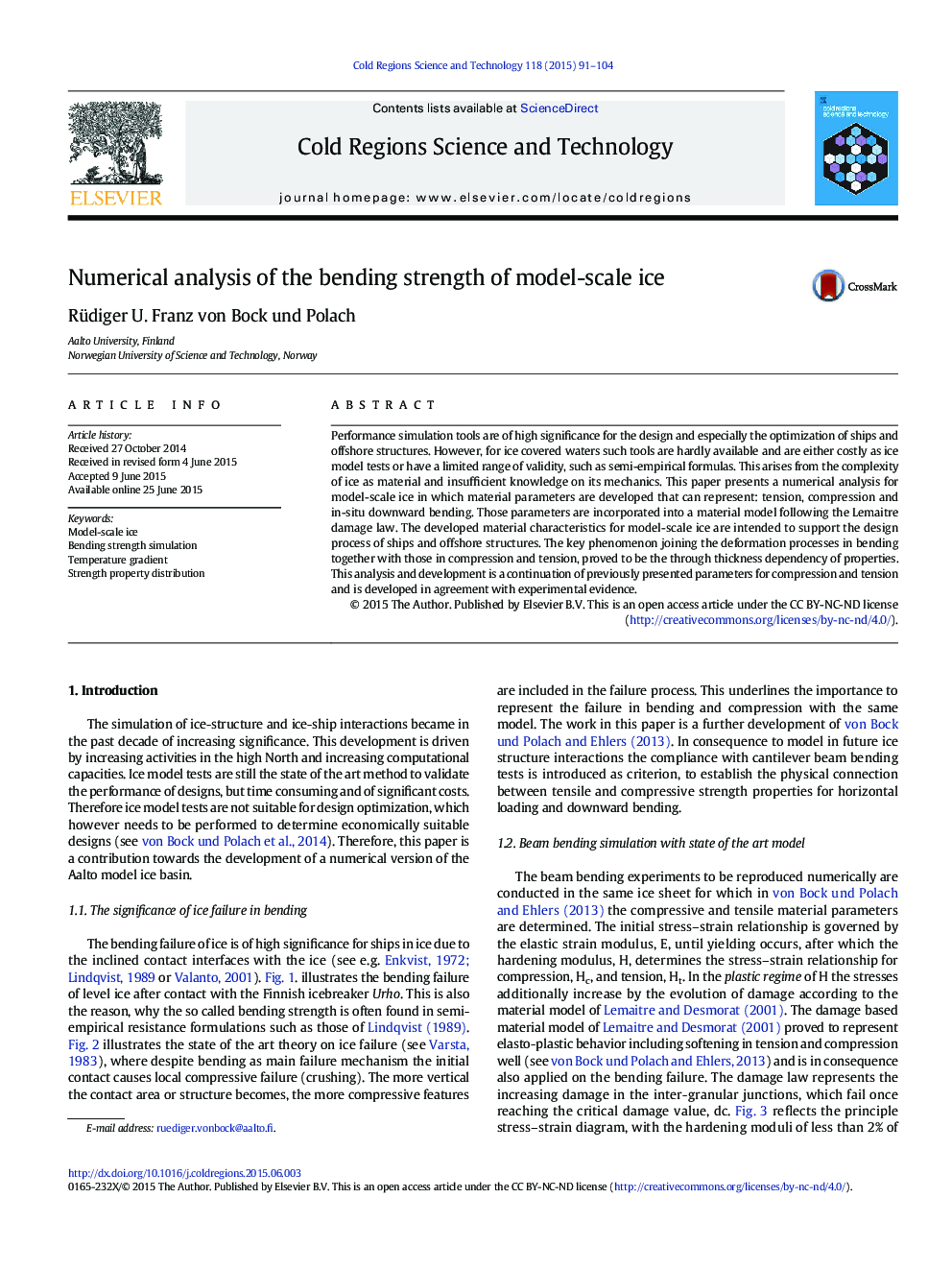| Article ID | Journal | Published Year | Pages | File Type |
|---|---|---|---|---|
| 6426777 | Cold Regions Science and Technology | 2015 | 14 Pages |
â¢The numerical model uses basic input parameters from experiments.â¢The micro-structural non-homogeneity is accounted.â¢The model is based on damage mechanics.â¢Voids do not explain material response variation fully.
Performance simulation tools are of high significance for the design and especially the optimization of ships and offshore structures. However, for ice covered waters such tools are hardly available and are either costly as ice model tests or have a limited range of validity, such as semi-empirical formulas. This arises from the complexity of ice as material and insufficient knowledge on its mechanics. This paper presents a numerical analysis for model-scale ice in which material parameters are developed that can represent: tension, compression and in-situ downward bending. Those parameters are incorporated into a material model following the Lemaitre damage law. The developed material characteristics for model-scale ice are intended to support the design process of ships and offshore structures. The key phenomenon joining the deformation processes in bending together with those in compression and tension, proved to be the through thickness dependency of properties. This analysis and development is a continuation of previously presented parameters for compression and tension and is developed in agreement with experimental evidence.
